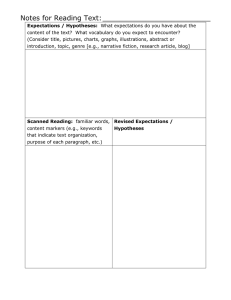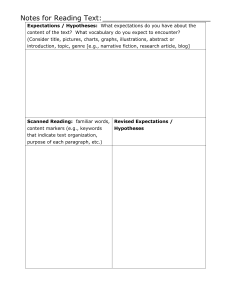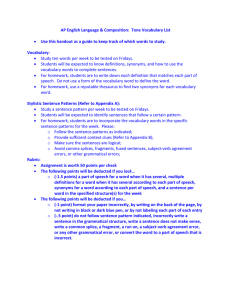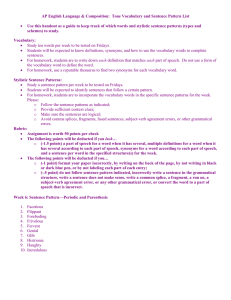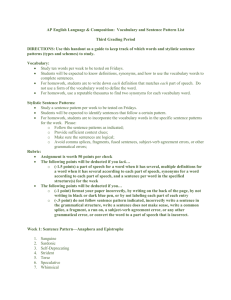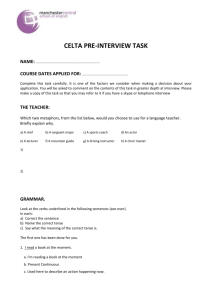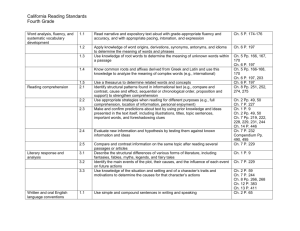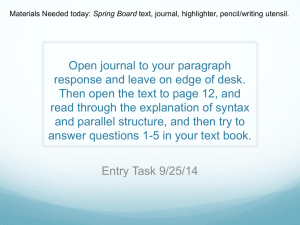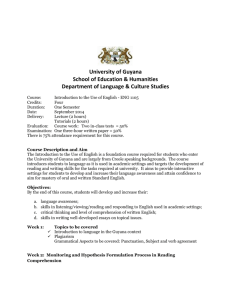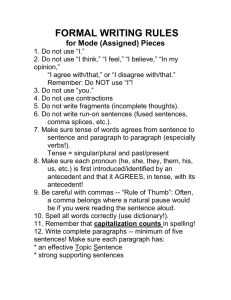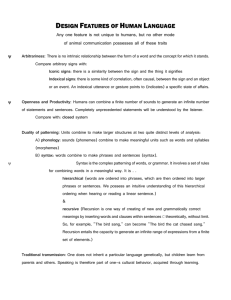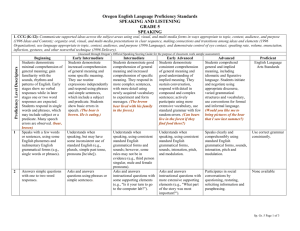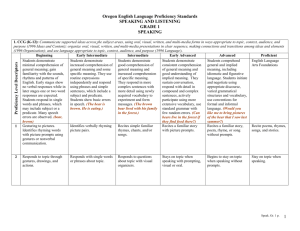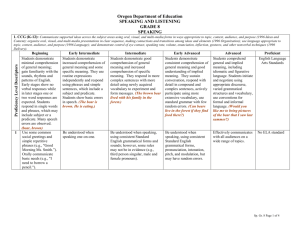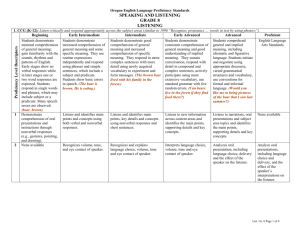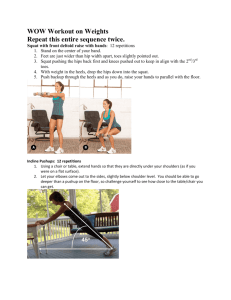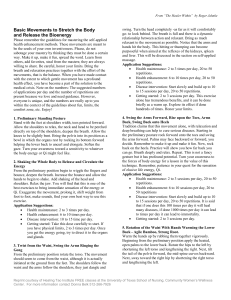Language Proficiency Continuum
advertisement
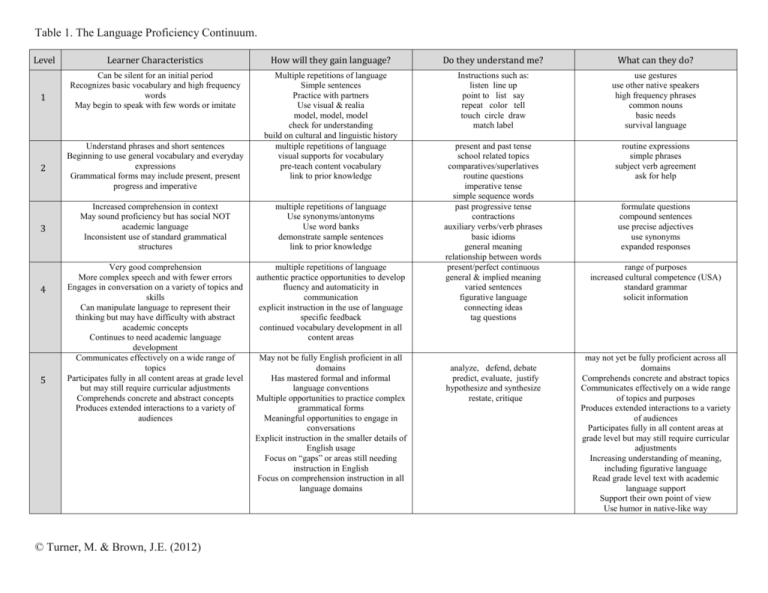
Table 1. The Language Proficiency Continuum. Level 1 Learner Characteristics How will they gain language? Do they understand me? What can they do? Can be silent for an initial period Recognizes basic vocabulary and high frequency words May begin to speak with few words or imitate Multiple repetitions of language Simple sentences Practice with partners Use visual & realia model, model, model check for understanding build on cultural and linguistic history multiple repetitions of language visual supports for vocabulary pre-teach content vocabulary link to prior knowledge Instructions such as: listen line up point to list say repeat color tell touch circle draw match label use gestures use other native speakers high frequency phrases common nouns basic needs survival language present and past tense school related topics comparatives/superlatives routine questions imperative tense simple sequence words past progressive tense contractions auxiliary verbs/verb phrases basic idioms general meaning relationship between words present/perfect continuous general & implied meaning varied sentences figurative language connecting ideas tag questions routine expressions simple phrases subject verb agreement ask for help 2 Understand phrases and short sentences Beginning to use general vocabulary and everyday expressions Grammatical forms may include present, present progress and imperative 3 Increased comprehension in context May sound proficiency but has social NOT academic language Inconsistent use of standard grammatical structures multiple repetitions of language Use synonyms/antonyms Use word banks demonstrate sample sentences link to prior knowledge Very good comprehension More complex speech and with fewer errors Engages in conversation on a variety of topics and skills Can manipulate language to represent their thinking but may have difficulty with abstract academic concepts Continues to need academic language development Communicates effectively on a wide range of topics Participates fully in all content areas at grade level but may still require curricular adjustments Comprehends concrete and abstract concepts Produces extended interactions to a variety of audiences multiple repetitions of language authentic practice opportunities to develop fluency and automaticity in communication explicit instruction in the use of language specific feedback continued vocabulary development in all content areas 4 5 © Turner, M. & Brown, J.E. (2012) May not be fully English proficient in all domains Has mastered formal and informal language conventions Multiple opportunities to practice complex grammatical forms Meaningful opportunities to engage in conversations Explicit instruction in the smaller details of English usage Focus on “gaps” or areas still needing instruction in English Focus on comprehension instruction in all language domains analyze, defend, debate predict, evaluate, justify hypothesize and synthesize restate, critique formulate questions compound sentences use precise adjectives use synonyms expanded responses range of purposes increased cultural competence (USA) standard grammar solicit information may not yet be fully proficient across all domains Comprehends concrete and abstract topics Communicates effectively on a wide range of topics and purposes Produces extended interactions to a variety of audiences Participates fully in all content areas at grade level but may still require curricular adjustments Increasing understanding of meaning, including figurative language Read grade level text with academic language support Support their own point of view Use humor in native-like way
